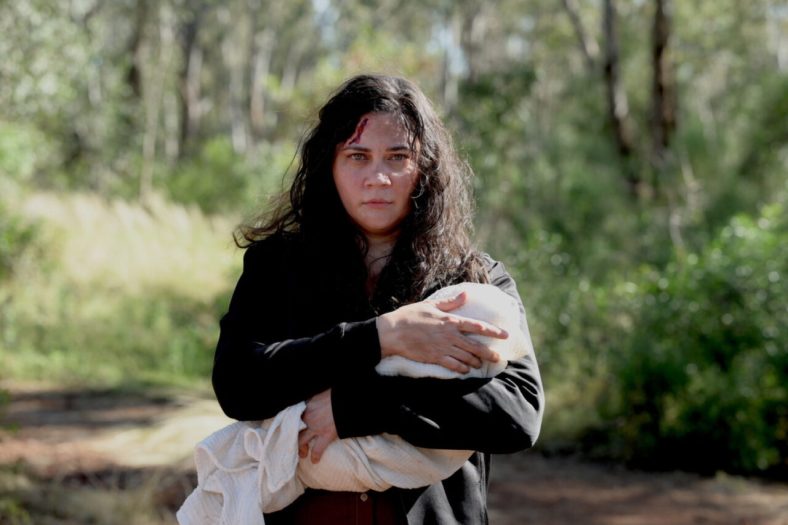‘The Moogai’ Sundance 2024 Review: Fresh Take On Boogeyman Horror Misses Its Mark

Early on in Jon Bell’s Sundance 2024 selection, we learn that the Moogai roughly translates to Boogeyman or The Stealer of Children. This is when it becomes a clear analogy that the unfolding horrors of the film represent the fates of Indigenous Australians who were quite literally stolen from their homes. Growing up in Canada, we would learn of similar crimes committed against our own Indigenous population through the residential school system.
You don’t have to look far for information about the consequences of multiple stolen generations in Australia and Canada: death, trauma, and inherited horror. The Moogai takes an important and fresh entryway into the trope of parenthood trauma, but not unlike the Sundance 2023 title Run Rabbit Run, the originality and execution of its horror fall flat.
In the film, Sarah (Shari Sebbebs) is a young Australian mother who gives birth under physically traumatic circumstances. While the child and mother appear healthy, it’s not long before strange occurrences turn Sarah’s home into a minefield of spooky children with hair covering their faces and unreliable messages from ghoulish supernatural forces. When her somewhat estranged birth mother, Ruth, an Indigenous woman with spiritual belief systems, attempts to use non-traditional resources to assist Sarah’s newborn, contention between the generations grows. Sarah is eager to move away from the supernatural superstitions of her lineage, leaving her and her family vulnerable to the evil powers of the Moogai, a child-stealing boogeyman. Soon, Sarah and Ruth are forced to cooperate to save their family from the malevolent, titulous demon.
I wish the analogy of stolen children and cultural genocide had its roots in the rest of the film and didn’t lose itself after the first set piece. The opening sequence of the film depicts Ruth’s sister stolen from her family as a child by shadowy white men in suits, a very real force of evil that displaced countless children from their homes, in both Australia and Canada until as late as the nineties. However, this is never really brought up again, and the analogy of the Moogai quickly fades into something audiences have seen so many times before.
Little girls stand in corners, their faces covered in long black hair. Strange noises fill the bedroom where an exhausted, unreliable narrator tries his best to sleep—creepy crayon drawings of ghostly figures appear in class. We’ve seen these tropes done well, like with sister Causway Films’ production The Babdook.
While the performances are strong and the cinematography is competent, there’s a tightness missing in The Moogai that prevents it from ever succeeding. And the silly horrors of infants opening pupilless eyes and Samara-esque girl ghosts roaming the halls of a confused and terrified new parents’ apartment are all too cliche to be effective. And that’s still not taking into account the almost laughable monster effects of the final act.
So many aspects of this feature had the potential to move the horror needle. A tragic back-turning on tradition leads a young family into danger, and an unseen man with long hands menaces children and parents alike. But a lack of commitment to the analogy and the horror leaves this title without much to latch on to. The emergence of the creature in the final act is almost laughable, first appearing in the back of a photograph like a phantom from the Sinister or Insidious universes … just a whole lot less effective.
Like Run Rabbit Run, The Moogai is another stale example of the monstrous mother trope popularized by 2010s prestige horrors like The Babadook and Hereditary. The finale, which could have been lifted right out of an episode of Buffy the Vampire Slayer, shows our protagonist quite literally fist-fighting her metamonster. Some competent filmmaking and decent storytelling intentions can’t save this tepid title from itself.
-
The Moogai
Summary
‘The Moogai’ from filmmaker Jon Bell evokes the fascinating and underrepresented perspective of Indigenous Australians and the very relevant theme of stolen children; however, it never lives up to the promises of its opening sequence.

